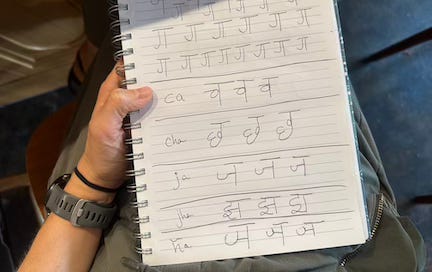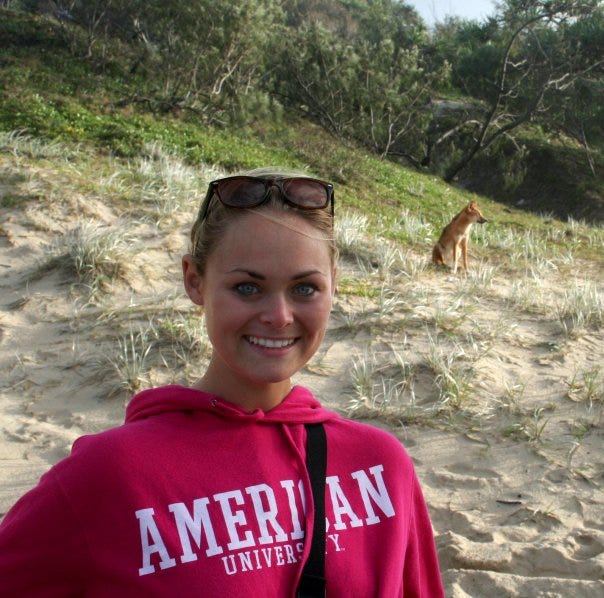In the spring of 2009 in Brisbane, Australia, I walked nervously into a tattoo studio for the first time in my life — not to get inked, but to get answers.
I was there to interview one of the artists while researching a paper I was writing for a class called Australian Popular Culture. My final thesis for the course was on tattoo culture, studying the historical influence of Māori and interviewing local artists to inform the modern culture. (About all you need to know about the rigor of my academics abroad is that this was one of only three courses I took that semester and the other two were Australia’s Terrestrial Environment and Australian Political Systems. All pass/fail.)
As the semester was wrapping up, I figured it would be the perfect capstone of my experience to return to that shop and get a tattoo that signified this time in my life.
Alas, I never did. In hindsight, I appreciate the skepticism of my judgment. How much would you trust a 21-year-old who managed to step, soberly, into oncoming traffic after habitually checking the wrong direction for cars despite the study abroad coordinators explicitly warning of this exact scenario during orientation? In fairness, they say the brain isn’t done forming yet in your early 20s.
If you’d asked me at the time, I might have answered that I just hadn’t thought of anything that Future Era Me would want marked permanently on her body. Translation: I hadn’t experienced anything that felt Big-T True yet.
That is, until about 6 years later during my yoga teacher training.
One morning as we were starting a full day of lessons, which we always began with meditation and chanting, one of the mantras kind of…rewired me a bit. Physically, tears welled in my eyes and I was overwhelmed by this feeling I can only describe as love. But this wasn’t love in a more carnal way previously understood in romantic relationships nor was it love in a kind of familial or obligatory sense. It felt instead like there was a clearing away — and what was left was an essence that had always been there. “Spiritual awakening” has become such a cliché but sometimes clichés exist because the real description takes too long to explain, involving hand gestures and deep sighs, along with an attentive, unjaded audience.
Years later, at my friend Pat’s suggestion, we found ourselves under the needle on 18th Street in D.C. and I got my first (and only, to-date) tattoo of the Sanskrit mantra, Om Namah Shivaya, ॐ नमः शिवाय.
The tattoo is seldom seen since it’s on my ribcage but in the occasional moments I’m asked to explain it, I tend to brush around the edges: it’s a mantra I learned during my yoga teacher training. And then the person will ask, but what does it mean? Naturally, they want to know what it translates to, because this is how we understand foreign languages. One answer is that it’s a popular devotional Hindu mantra that is a prayer to the god Shiva, said to be the destroyer and re-creator of the universe. You could say it translates to, “I bow down to Shiva” or that it means bowing down to your own inner self.
But these direct book translations alone are not what makes the mantra significant to me. What does is that when I’m chanting it with devotional attention, I can still tap into that essence of love again. It’s not an intellectual understanding, it’s a practical understanding.
In the seven years since, I’ve wondered fleetingly, anxiously while scanning Reddit threads, about this choice to get inked with Sanskrit — an ancient language I’m largely ignorant of. Perhaps it’s healthy to question if it is sacrilege to put a sacred mantra on one’s body that I couldn’t write myself without Googling, or to interrogate the bounds of cultural appropriation. But beneath the worries, the real concern is: Do I know enough?
This desire for knowledge is logical. Our culture conditions us to believe that the more information we have and the more research that we do and the more that we learn, the closer we will get to The Truth, as though the truth is a static place where we can arrive intellectually. But even scientists know that’s not realistic or practical. Scientists know (through the scientific method) that our concept of the nature of reality is based on an evolving, iterative, collaborative process. The moment that science settles for itself rather than continuing to question itself, it becomes dogma. And the moment that an individual settles for what is essentially a gap in knowledge, there is the inclination to craft a narrative to fill it, and to be drawn to individuals who are skilled at crafting narratives. And you’ve got to be attentive to this in the wellness space, because where is a story there is often a suggested villain and a prescribed hero and eventually, it’s very easy to be sold a bill of goods for how to fight the villain. In my opinion, the same goes for any spiritual practice.
It’s also worth asking, what is the risk of achieving satisfaction from having figured something out? What do I give up by being rocked like a baby into the sleepy delusion that I have all the answers I need? And anyway, isn’t my spiritual practice there not to help me uncover the answers but to allow me to live inside the questions with a bit less suffering?
In that spirit of curiosity I resisted my aversion to learning more about a topic that put me so far outside my comfort zone — a topic that I knew would necessitate practice rather than dole out answers. A couple of weeks ago I started an eight-week Mantra Yoga immersion where we’re learning the sounds of Sanskrit, including learning to chant the alphabet and practice writing each letter, a practice known as Likhita Japa.
After a long pause in self-development as a yoga instructor, the first class was like a homecoming. And rather than feel overwhelmed by learning to write and speak letters from an entirely new language, I actually felt like I was learning from the very beginning how to speak again.
During class, the instructor pointed out that each letter creates a position of the mouth — like an asana (body posture). I had never thought about it like that. We went through each letter of the alphabet and learned how to create the form at a fundamental level, learning where the tongue should be in the mouth and how air is moving.
Something about lingering in the physical form of the sounds made me recognize how interrelated song, language and movement are. It also made me wonder how much easier it would have been to learn Spanish in grade school if it had been taught in this more primal way, rather than trying to guess at how to say words/phrases based on repetition and imitation while sitting quietly and still at a desk. Practicing writing the letters in a way felt childlike and soothing and what once felt mysterious and overwhelming on the page was made accessible.
More than once, I asked questions of our instructor and rather than receiving answers, I was met with additional questions. I left feeling expansive, the shape of the sounds forming a new meaning — perhaps a new understanding of truth (of love?) in the making and remaking.
According to the Pew Research Center, 32% of Americans have a tattoo, and most of that group (22% of Americans) have more than one. Right after I got mine, I understood this. I could see why people get hooked. Maybe it’s physiological — the rush of endorphins and adrenaline and wanting to catch that wave again. Maybe it’s psychological — after the first, what’s the big deal about a few more?
The Indian Journal of Dermatology did a study that found the mean age people get their first tattoo is 21, but what I’m really interested in are the tattoos that people get when they’re 40 or 50 or 60. I’m drawn to what becomes most meaningful with age and perspective.
But there’s also risk to remaining so skeptical that you never make your mark. I understand now that my fears of permanence around tattoos connect with my other fears about publishing a book. To put that stamp on a decision or a perspective, then to release it to the edge of permanence, no take-backs. You did the deed, it’s on your skin, it’s out there for public consumption. Maybe committing and being sure enough requires room to change in the future, enough space for your future self to evolve, question, regret, even if that means owning it all visibly.
Maybe seeing all the versions of ourselves, all the past lives, all the cringe, all the questionable, all the tragic and the brave, painted onto your skin, spelled out onto the page, is how we own our adaptability, which is another way of saying, it’s how we own our humanity.
Ask how I feel about it after I get my second.
Reserving the right to change my mind,
Kelly
PS - Join us for a New Year’s yoga retreat!
My co-host
and I are so excited to be offering this intentional New Year’s yoga retreat again this year, our third one at the same eco-friendly center in western Maryland. The retreat is three nights, from December 29, 2024 - January 1, 2025, and there will be daily yoga, meditation and yoga nidra, workshops, hiking and plenty of chill time. All meals and activities are included. It’s going to be a lovely way to decompress after this year.There are plenty of spots and still time to decide, thought we have sold out every year so if you have any questions please reach out to me (kelly.a.barrett@gmail.com)!





